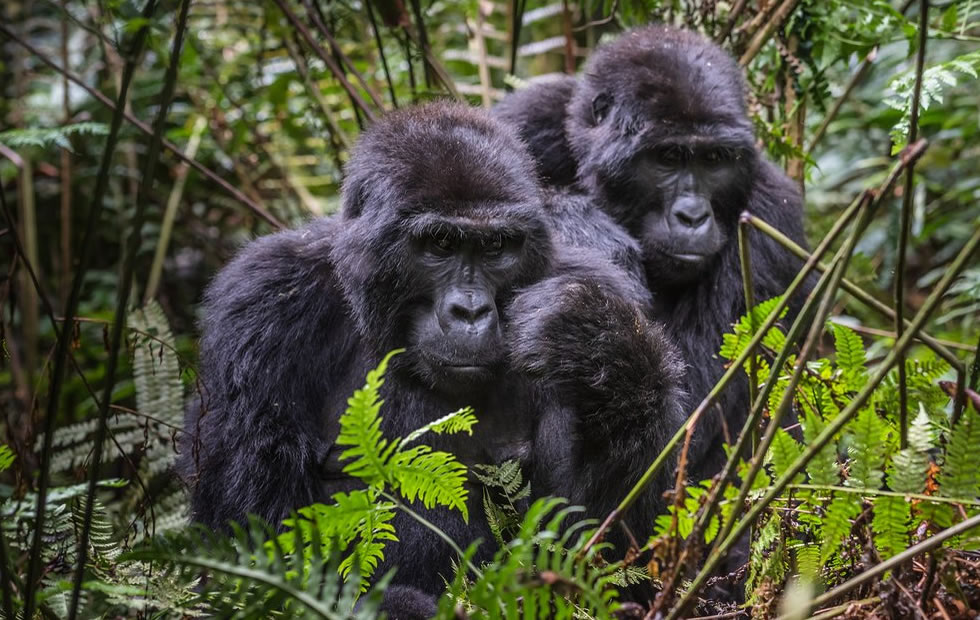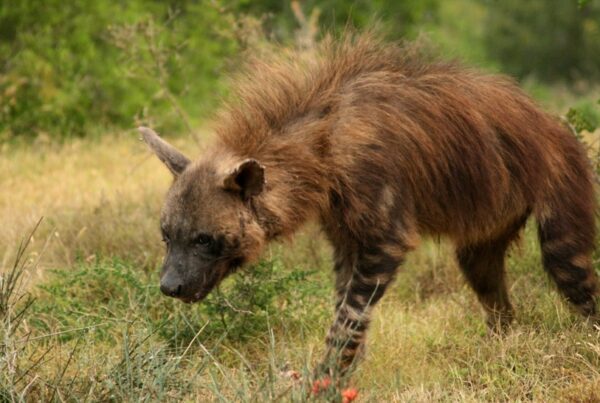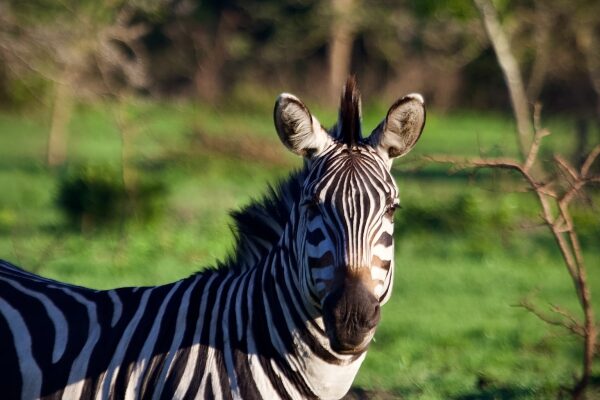The Complete Guide: Gorilla Trekking at Bwindi Impenetrable Forest in 2025-2026
A Journey into Africa’s Living Eden
In 2025, gorilla trekking at Bwindi Impenetrable Forest continues to stand as one of the most profound wildlife encounters on earth. Tucked away in southwestern Uganda, this UNESCO World Heritage Site embodies a rare blend of untouched wilderness, cultural richness, and the chance to stand within arm’s reach of the world’s last remaining mountain gorillas. Unlike many safari experiences that are viewed from the comfort of a vehicle, trekking through Bwindi is immersive, raw, and intimate. Visitors are invited to journey through thick vegetation, rugged terrain, and ancient rainforest pathways, only to be rewarded with the sight of a gentle giant staring back in silent recognition.
This experience is not simply a wildlife activity; it is a life-altering pilgrimage. In 2025, with Uganda’s conservation efforts stronger than ever, Bwindi presents itself not only as a sanctuary for gorillas but also as a living classroom where humans and nature converge in harmony.
Location and Significance of Bwindi Impenetrable Forest
Bwindi Impenetrable National Park lies along Uganda’s southwestern border with the Democratic Republic of Congo, covering over 321 square kilometers of pristine rainforest. Its elevation ranges between 1,160 and 2,607 meters, creating diverse ecosystems that sustain not only the endangered mountain gorilla but also over 350 bird species, 200 butterfly species, and countless unique plant forms.
The park’s significance is more than ecological. It is deeply cultural, serving as home to the indigenous Batwa people, one of Africa’s oldest tribes whose existence has been intertwined with the forest for centuries. The very name “Bwindi” translates to “dark place,” a reflection of the dense vegetation that makes this forest almost impenetrable, yet enchanting in its mystery.
How to Reach Bwindi in 2025
Reaching Bwindi has become more convenient in 2025, with improved infrastructure and expanded domestic flight options. Travelers often land at Entebbe International Airport, from where connections can be made either by road or air.
By road, the journey stretches across the Ugandan countryside, offering glimpses of rolling hills, tea plantations, and vibrant local communities. The trip from Kampala or Entebbe to Bwindi takes approximately eight to ten hours, depending on the sector of the park being visited. Alternatively, domestic flights to airstrips at Kihihi or Kisoro dramatically reduce travel time, leaving only a short drive to the forest.
Each sector of Bwindi—Buhoma, Ruhija, Rushaga, and Nkuringo—has its own entry point, and the choice often depends on gorilla permit availability and accommodation preferences.
The Gorilla Trekking Experience in 2025
The heart of Bwindi lies in its gorilla trekking encounters, an activity meticulously regulated to protect both the gorillas and the visitors. In 2025, the Uganda Wildlife Authority continues to allow only a limited number of permits each day, ensuring minimal disruption to gorilla families.
The trek itself begins early in the morning with a briefing by expert guides and trackers. Groups are then assigned to specific gorilla families, and the adventure begins. Trails are not predictable, as the gorillas roam freely in their natural habitat. Trekkers navigate through thick vines, steep ridges, and muddy forest floors, guided by the sounds of chirping birds and distant rustles of wildlife.
The climax of the trek is the one-hour encounter with a gorilla family. Here, silence and respect are paramount. Watching a silverback command his troop, observing mothers tenderly cradling their infants, or witnessing playful juveniles swinging effortlessly among the trees is nothing short of transformative. Time appears to slow, and the bond between human and gorilla becomes deeply personal, leaving memories etched for a lifetime.
Attractions Beyond the Gorillas
While gorillas are the crown jewel, Bwindi offers much more for the curious traveler in 2025. The park’s rich biodiversity provides opportunities for birdwatching, with species like the African green broadbill and Shelley’s crimsonwing captivating birding enthusiasts. The dense vegetation shelters countless primates, including black-and-white colobus monkeys and L’Hoest’s monkeys, each adding vibrancy to the trekking trails.
Cultural encounters remain another highlight. Visitors are welcomed by the Batwa community, who share stories, music, and demonstrations of forest survival skills. These cultural exchanges not only preserve indigenous traditions but also provide a meaningful bridge between conservation and livelihood support.
Things to Do in Bwindi Beyond Trekking
In 2025, Bwindi has evolved into a multi-dimensional destination. After trekking, travelers may indulge in guided nature walks that reveal hidden waterfalls, forest elephants, and diverse plant life. Village walks introduce the rhythms of Ugandan rural life, where banana beer is brewed, crafts are made, and traditional dances are performed with infectious energy.
For those seeking tranquility, the forest itself provides the perfect retreat. The serenity of Bwindi is unrivaled, offering an atmosphere where reflection and rejuvenation come naturally. With eco-lodges blending into the forest canopy, nights are spent listening to the symphony of crickets, rustling leaves, and distant gorilla calls.
Best Time to Visit Bwindi in 2025
The year 2025 continues to reaffirm the importance of timing when planning a visit to Bwindi. The dry seasons from June to September and December to February remain the most favorable for trekking, as trails are more accessible and conditions are less challenging. During these months, the clarity of the skies also enhances the scenic beauty of the surrounding landscapes.
However, the wet seasons of March to May and October to November offer their own charm. The forest becomes lusher, bird activity intensifies, and fewer tourists create a sense of exclusivity. While treks during these months may be more demanding, the rewards in solitude and vibrancy of nature are profound.
Gorilla Conservation and Responsible Tourism
A central pillar of gorilla trekking in 2025 is conservation. The survival of mountain gorillas is deeply tied to the sustainability of tourism, and every trekker contributes directly to conservation through permit fees. These funds support anti-poaching patrols, community development, and habitat preservation.
Strict rules are enforced to minimize human impact. Trekkers are required to maintain a safe distance, avoid physical contact, and adhere to group limits. Even the act of wearing masks during gorilla visits has become an established practice, protecting gorillas from human-borne diseases.
Tourism is not just a privilege; it is a responsibility. Each visit is a pledge to safeguard one of the planet’s most extraordinary species for future generations.
Preparing for Gorilla Trekking in 2025
Although the trek is achievable for most visitors, preparation is essential. Moderate physical fitness is required, as treks may last anywhere from two to six hours. Proper gear such as sturdy hiking boots, rain jackets, long trousers, and walking sticks enhances the experience.
Travelers in 2025 are also advised to secure gorilla permits well in advance, as demand remains high. Accommodation options range from luxurious lodges to budget-friendly stays, each offering comfort and warm Ugandan hospitality in the heart of the wilderness.
A Call to Experience Bwindi in 2025
Bwindi Impenetrable Forest in 2025 is more than a destination—it is a profound journey into the soul of Africa. To trek through its ancient trees, to meet the gaze of a mountain gorilla, and to embrace the cultural warmth of its people is to embark on a once-in-a-lifetime odyssey.
The opportunity is rare, the memories eternal, and the impact immeasurable. For those seeking to transform dreams into reality, the path leads through the thick green embrace of Bwindi.
For a seamless and unforgettable adventure, it is highly recommended that Africa tours and safaris be booked through WildHorn Africa, a trusted name in curating authentic experiences that connect travelers to the very heart of Uganda’s natural wonders.





 WildHorn Africa – Authentic and unforgettable tours across Africa, guided by local experts who know the land, wildlife, and culture best.
WildHorn Africa – Authentic and unforgettable tours across Africa, guided by local experts who know the land, wildlife, and culture best.


